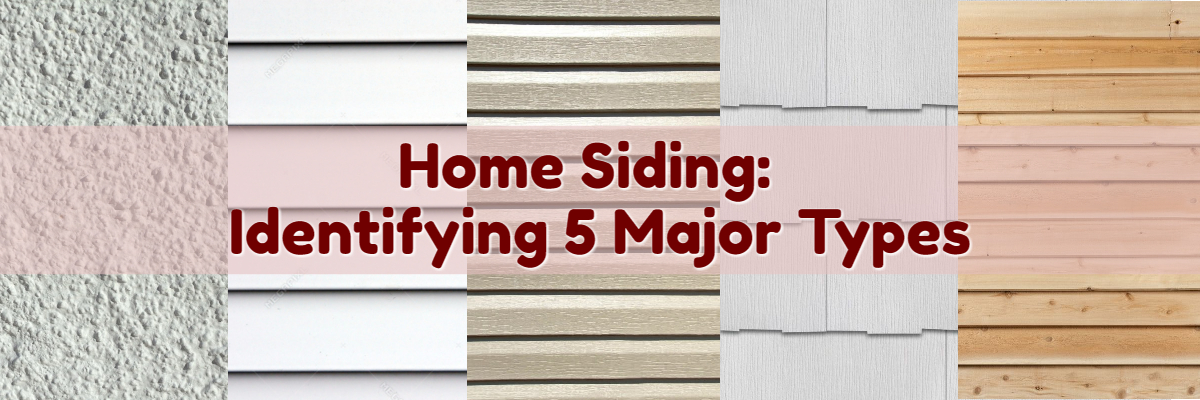Home Siding – Identifying 5 Major Types

When purchasing a new home, buyers want to know what type of siding is installed. While most realtors will have that information readily available, the type of siding on a home is sometimes unknown. We’ve collected the 5 most common types of exterior siding and ways to identify them to make your next home purchase a little easier.
Vinyl
The most common type of residential siding in America today, this durable, lightweight material comes in a wide range of colors and patterns. Vinyl siding snaps onto a track that is nailed into the exterior of the home. It is a fairly easy material to identify, as it feels like plastic and gives relatively easily when pushed. Vinyl siding requires little upkeep, usually just occasional washing. Repairing vinyl siding can be a challenge, as fading can make it difficult to find a suitable color match.
Stucco and Synthetic Stucco
True stucco siding is a mixture of cement and sand, water, and lime which is installed directly onto the outer walls of a home. It feels rough and solid, and can be tinted or painted. Stucco also sounds solid if it is knocked on. Synthetic stucco has the same look, from afar, of real stucco, but sounds hollow when knocked on. Naturally fire-resistant and sound-dampening, true stucco is incredibly durable, lasting 50 years or more.
Wood
Wood siding comes in multiple grains and constructions, from full planks to individual tiles. When stained, wood siding is very easy to pick out because the knots and other imperfections in the individual pieces are visible. Though there is synthetic wood siding on the market, synthetic wood cannot emulate the feel of real wood. Wood requires the most upkeep of siding materials, as it must be painted or sealed and protected against moisture to avoid rotting.
Aluminum
Aluminum was once one of the most popular siding materials on the market, and still is a major choice for commercial and industrial buildings. It can be painted and does come in a range of colors, sometimes looking very similar to vinyl siding. However, aluminum dents more easily and will have a metallic sound when knocked on. Despite easy denting, aluminum siding can last up to 50 years if cared for properly, and some aluminum siding even can be recycled.
Fiber-Cement
Manufactured to replace the once-popular asbestos siding, fiber-cement siding has increased in popularity in recent years. It comes in a variety of shapes, patterns, and colors, and is used for everything from siding to soffit material. It can have a similar look and feel to vinyl siding, but because it is created using a mixture of sand, cement, and cellulose fibers, it has a more solid feel and is more durable. Fiber-cement siding is very heavy due to its construction, but it is among the most versatile materials, performing well in areas with high humidity, above-average rainfall, or large temperature fluctuations.
Knowing what type of siding your home has is a crucial part of any home-buying decision. Armed with the information in this article, you can easily determine the differences between most popular siding materials. Contact the professionals at Select Home Exteriors for help learning about the maintenance, repair, and care of your new home’s siding.
